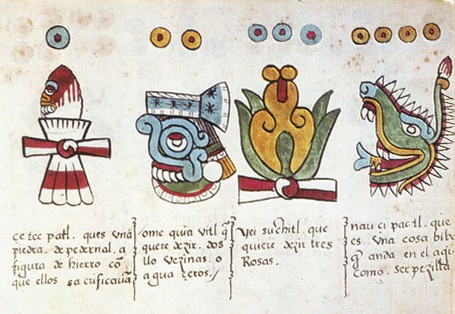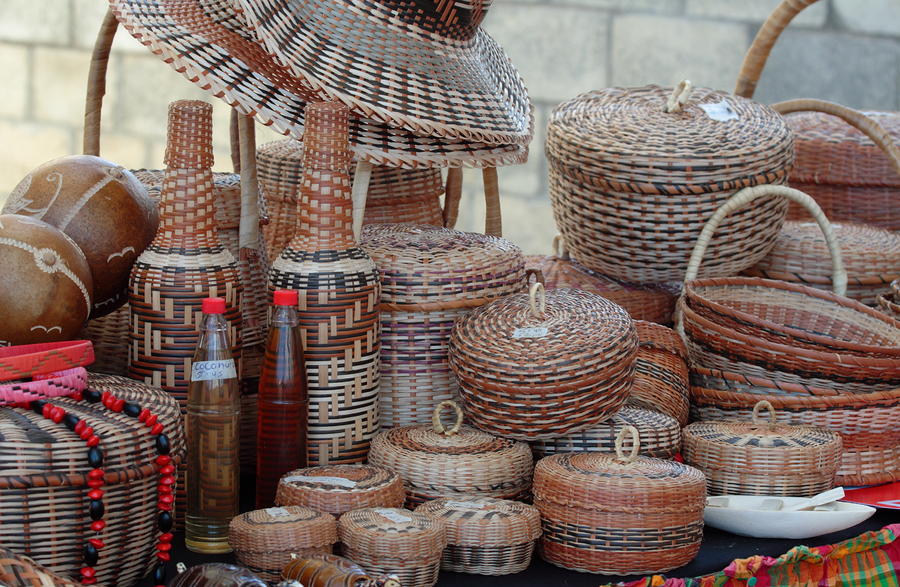Mexican art got its
start with the Olmecs in the forms of jade art and jewelry, rock art,
hieroglyphics, and sculptures. The Olmecs were particularly known for their
giant stone heads. I’ve always wondered whether there was some ancient
relationship between the Olmecs and West Africans. If you look at these stone
heads, they feature large lips and wide noses, giving them a striking
resemblance to African features. They also excelled at ceramics as well.
As the Spanish arrived,
they began building churches, and many of these early churches were examples of
some great stonework. Aztec codices were also very common during this time as
was the beginnings of various types of painting. Painting in this era was a mix
of European styles with a definite Mexican quality to the subject matter.
Religious and historical paintings dominated.
During the
mid-to-late 1700s, artists started to veer off into more secular art. One of
the largest art academies was established during this time: the Academy of San
Carlos, not only supporting painting arts but sculpture as well. After Mexico
gained its independence, this academy also gained notoriety as the prestigious
art school in Mexico, later renamed National Academy of San Carlos. There was
still an intense reliance on European artistic styles during the mid-1800s, and
many Europeans traveled to Mexico to study and teach. In fact, several English
and German artists especially took residence in Mexico to pursue their arts.
The late 19th and early 20th century brought along
artists such as Pelegrí Clavé, Diego Rivera, and Saturnino Herrán.
The 20th
century brought many changes in Mexican art. There were a lot of political
changes going on which was reflected in their art. Mexican artists do not
generally create art for art’s sake; it very much served a purpose. Most of
their art is created to either make a political/social statement or evoke an
emotion or describe a way of life. Throughout all of this, handicrafts were
still being made and encouraged to do so. Mural painting is one particular type
of art that has its roots all the way to Olmec and Mayan times. Even mural art
is often riddled with political and social messages. Identity and history are
also common themes seen on mural art. Other well known artists who have made
significant contributions to 20th century Mexican art include Frida
Kahlo (who is probably most famous for her unibrow), Rufino Tamayo, Manuel
Felguerez, Dr. Atl, José Clemente Orozco, David Alfaro Siqueiros, and many others.
Mexico is one of
the largest contributors to Spanish-language literature. Its literary history as
we know it actually started during the colonial period, and there were a few
writers of notoriety during that time, writing mostly in the Baroque styles. (Most
pre-colonial writing dealt with histories and other topics.) Codices (stories
or poems with elaborate illustrations) were a very common form of art and
literature during this time. After Mexico gained its independence from Spain,
an emergence of writers focusing on nationalism began to rise to prominence.
 |
| The oldest newspaper in Mexico. |
Writers working in
Mexico generally followed the literary genres of Europe and America. The 19th
century included quite a bit of political instability in Mexico, and the arts
suffered for this too, including literature. Romanticism, modernism, realism,
and positivism were a few of the literary movements that gained popularity
during this time.
The Mexican
Revolution helped create a new theme for writers. Many writers of the struggles
of this time used this as a common backdrop for their novels and poetry. But a
sense of nationalistic and journalistic writing also sprouted out of this
conflict as well. These styles continued to flourish even in the aftermath of
the revolution, but another type of literature also became prominent:
indigenous literature. The original people and their lifestyles became the
subject of many pieces of literature. Mexico entered into its Contemporary
Literature era in 1947 with the publication of Agustín Yáñez’s novel Al filo del agua, introducing to the
world a new era of Mexican literature. A number of foreign writers (including James
Joyce, William Faulkner, Gabriel García Márquez, Franz Kafka, and John Dos
Passos) were influenced by these works.
One writer in
particular, Octavio Paz, has been the only Mexican writer so far to be awarded
the Nobel Prize for Literature (1990).
He is often considered one of the greatest poets of all time and most
influential writers of the 20th century. Not only was he an
accomplished writer, but he also worked as a diplomat as well, being assigned
to New York, Paris, Switzerland, and India (he was later Mexico’s ambassador to
India). Two of his most well known works are the poem Piedra de Sol and the long essay El laberinto de la soledad.
Up next: music and
dance



.jpg)






